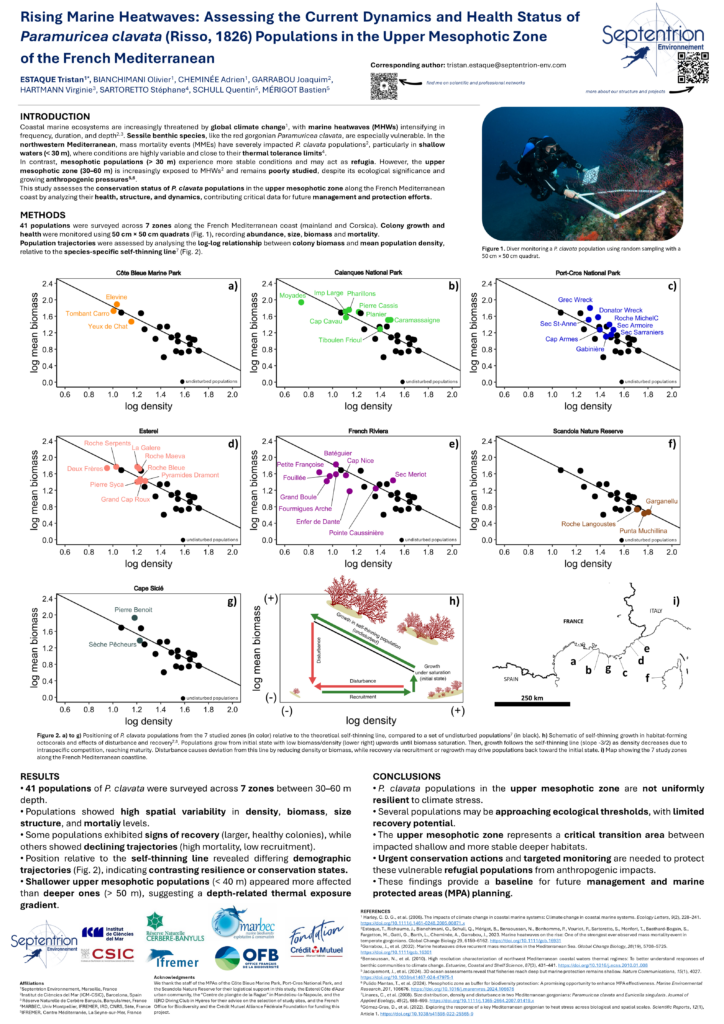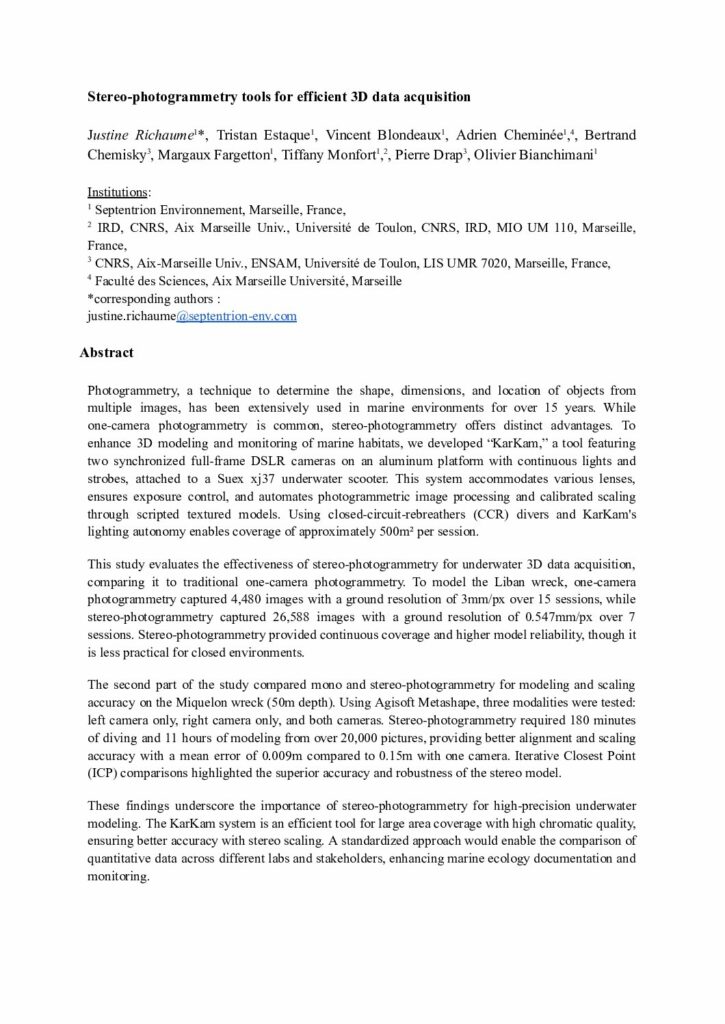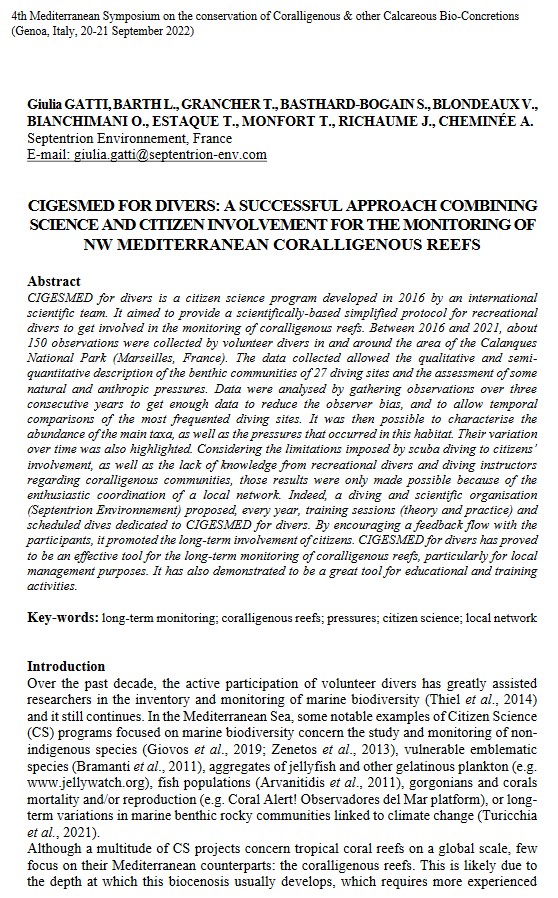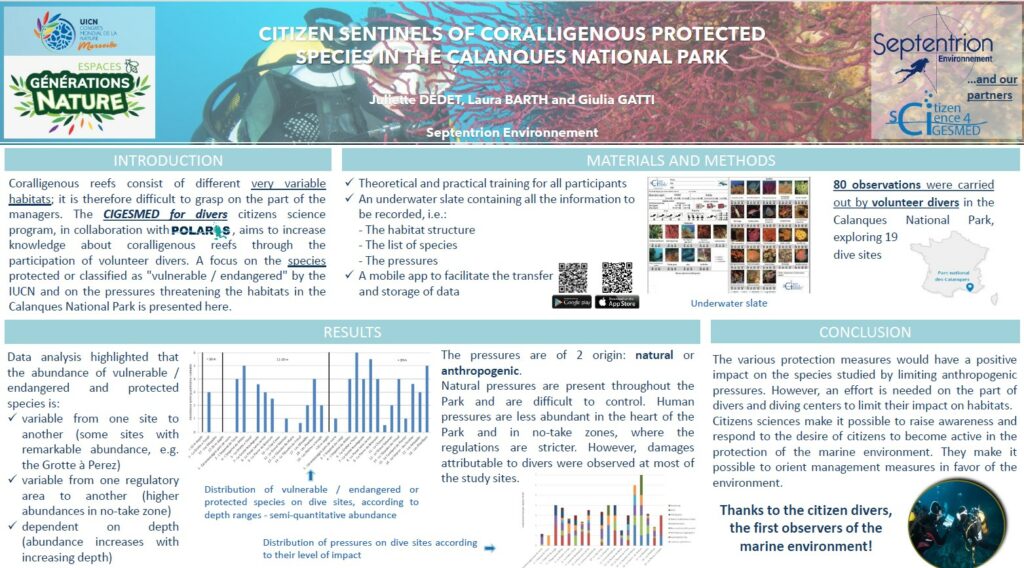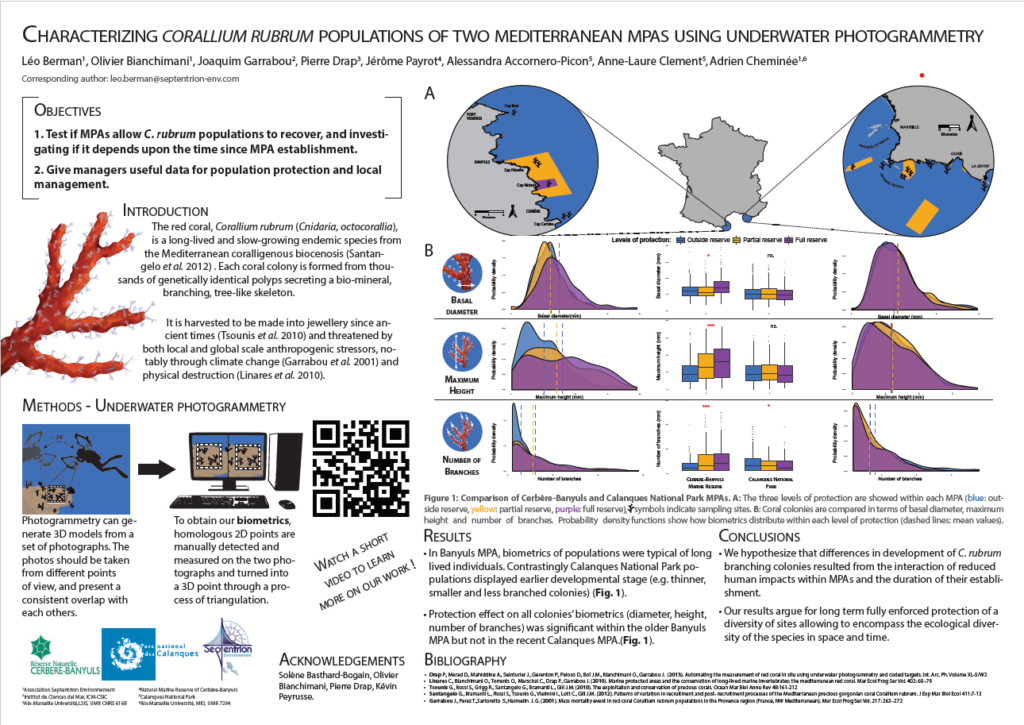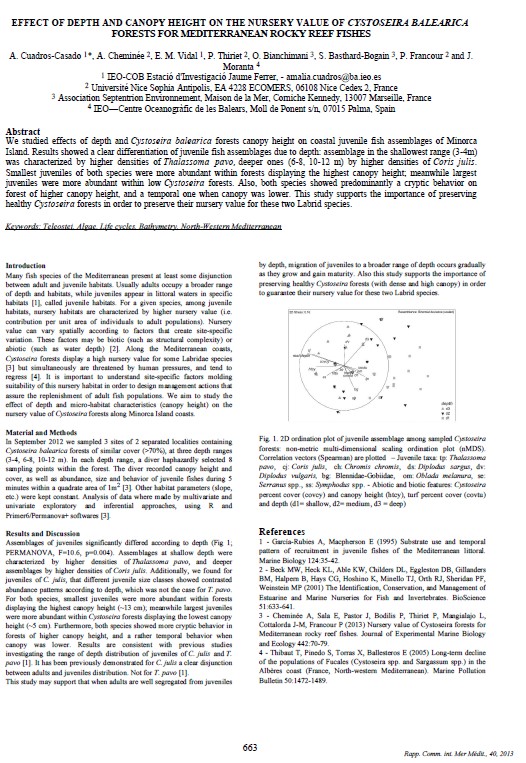Richaume, J., Estaque, T., Cheminée, A., Chemisky, B., Fargetton, M., Monfort, T., Drap, P., Bianchimani, O.
Photogrammetry, a technique to determine the shape, dimensions, and location of objects from multiple images, has been extensively used in marine environments for over 15 years. While one-camera photogrammetry is common, stereo-photogrammetry offers distinct advantages. To enhance 3D modeling and monitoring of marine habitats, we developed “KarKam,” a tool featuring two synchronized full-frame DSLR cameras on an aluminum platform with continuous lights and strobes, attached to a Suex xj37 underwater scooter.
This system accommodates various lenses, ensures exposure control, and automates photogrammetric image processing and calibrated scaling through scripted textured models. Using closed-circuit-rebreathers (CCR) divers and KarKam’s lighting autonomy enables coverage of approximately 500m² per session.
This study evaluates the effectiveness of stereo-photogrammetry for underwater 3D data acquisition, comparing it to traditional one-camera photogrammetry. To model the Liban wreck, one-camera photogrammetry captured 4,480 images with a ground resolution of 3mm/px over 15 sessions, while stereo-photogrammetry captured 26,588 images with a ground resolution of 0.547mm/px over 7 sessions. Stereo-photogrammetry provided continuous coverage and higher model reliability, though it is less practical for closed environments.
The second part of the study compared mono and stereo-photogrammetry for modeling and scaling accuracy on the Miquelon wreck (50m depth). Using Agisoft Metashape, three modalities were tested: left camera only, right camera only, and both cameras. Stereo-photogrammetry required 180 minutes of diving and 11 hours of modeling from over 20,000 pictures, providing better alignment and scaling accuracy with a mean error of 0.009m compared to 0.15m with one camera. Iterative Closest Point (ICP) comparisons highlighted the superior accuracy and robustness of the stereo model.
These findings underscore the importance of stereo-photogrammetry for high-precision underwater modeling. The KarKam system is an efficient tool for large area coverage with high chromatic quality, ensuring better accuracy with stereo scaling. A standardized approach would enable the comparison of quantitative data across different labs and stakeholders, enhancing marine ecology documentation and monitoring.
